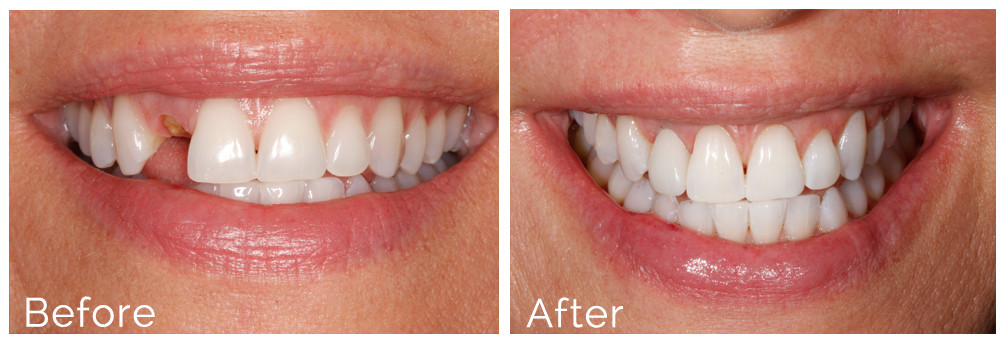Things about Dental Sense
Things about Dental Sense
Blog Article
The Definitive Guide for Dental Sense
Table of ContentsNot known Facts About Dental SenseThe Dental Sense IdeasDental Sense Things To Know Before You Get ThisThe Main Principles Of Dental Sense
are medical devices surgically dental implanted into the jaw to restore an individual's capacity to eat or their look. They provide support for man-made (phony) teeth, such as crowns, bridges, or dentures. When a tooth is lost due to injury or illness, an individual can experience issues such as quick bone loss, defective speech, or modifications to eating patterns that cause discomfort.Dental dental implant systems contain an oral implant body and dental implant abutment and might additionally include an abutment addiction screw. Dental implants. The oral implant body is surgically placed in the jawbone instead of the tooth's origin. The oral implant abutment is normally connected to the dental implant body by the joint addiction screw and expands through periodontals into the mouth to support the affixed fabricated teeth
(https://gravatar.com/futuristiccreativelyc881a796d5)Structure of The Oral Implant System choosing dental implants, talk to your oral copyright regarding the potential advantages and dangers, and whether you are a candidate for the treatment. Things to take into consideration: Your total wellness is an important element in determining whether you are an excellent prospect for dental implants, just how long it will take to recover, and how much time the dental implant might remain in area.
Cigarette smoking may affect the healing procedure and lower the lasting success of the implant. The healing procedure for the dental implant body might take several months or longer, during which time you usually have a short-term abutment in place of the tooth. the dental implant treatment: Very carefully adhere to the oral health guidelines provided to you by your oral provider.
The Best Guide To Dental Sense
Implant failure can lead to the demand for one more procedure to take care of or change the implant system. Brings back the capacity to eat Recovers cosmetic look Helps maintain the jawbone from diminishing because of bone loss Preserves the health and wellness of the surrounding bone and gum tissues Aids maintain surrounding (neighboring) teeth steady Boosts lifestyle Damage to bordering all-natural teeth throughout implant placement Injury to the surrounding tissues during surgical procedure, such as sinus opening Injury during surgical procedure (for instance, crack of surrounding jawbone) Inadequate feature, such as feeling like the teeth do not attack with each other typically A sensation that the tooth hangs or turning in position resulting from a joint screw loosening up Implant body failing (looseness of the implant body) because of systemic infection, which may be more probable in people with uncontrolled diabetics issues because of local infection in bone and gum tissues sustaining the implant body due to postponed healing, which might be more likely in patients who smoke Trouble cleansing the gums around the implant, causing inadequate dental health Neglected periodontal condition Post-surgical numbness due to nerve impingement or damages Constantly inform healthcare carriers and imaging specialists that you have oral implants before any type of magnetic resonance imaging (MRI) or x-ray treatments.
FDA is not knowledgeable about any type of negative events reported for MRI or x-ray procedures with oral implants. Oral implants systems are normally made of products that comply with global agreement standards of the International Organization for Standardization (ISO) or ASTM International. These criteria have information of what makes a safe material.

A dental implant is a structure that replaces a missing out on tooth. With screw-like devices, the doctor inserts a dental implant into the jawbone, and it functions as an anchor for a fabricated tooth, called a crown. A tool called a joint connects the man-made tooth to the oral implant. The crown is custom-made to fit the person's mouth and match the color of their teeth.
Not known Facts About Dental Sense
Some people are not eligible for dental implant surgical treatment. It check is for dental cosmetic surgeons to operate people with: severe illnessuncontrollable metabolic diseasebone or soft cells disease or infectionIf these problems are solved, an individual can have the surgical treatment. In, oral doctors avoid from operating people with: If people with any of the above undergo oral implant surgery, there is a higher threat of the implant stopping working.

Dental implant surgery is a customized process. Provide you time to recover. Affix the article and final crown, bridge or denture.
Next off, your surgeon will very carefully place the dental implant right into your jaw. Your specialist will certainly rearrange your gums and shut the incision with stitches. If your implant is near the front of your mouth, your dentist will make a temporary tooth for you to wear until you heal. This way, you won't have a void in your smile while you recover.
The Facts About Dental Sense Uncovered
Your company can tell you what to expect in your situation. Throughout the healing phase, your jawbone must fuse to the oral implant. This process, called osseointegration, is critical for stability and lasting success. This procedure can take anywhere from three to nine months. In some instances, it may take longer.
Once your implant heals, your dental expert can attach the joint (little adapter post) and your last remediation (crown, bridge or denture). This usually takes about one hour to complete and may call for a second minor surgical treatment. You should not feel any pain throughout your oral implant treatment due to the fact that your provider will use medicine to numb your gums.
Report this page